
|
GridNode Interconnection Protection Solutions
GE offers complete Network Interconnection protection based on System Integrity Protection Schemes (SIPS) solutions for Transmission utilities, and operators to protect the integrity of the interconnected network. These automated solutions with validated application function blocks provide the network real time actions for protecting interconnections and providing network operators with visibility and advanced notifications of impeding interconnected network separation. Key Benefits
Advantages of GE SIPS
|
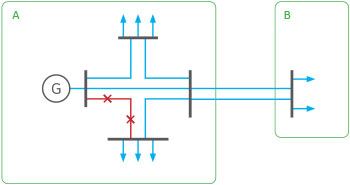
Network A interconnected with network B and sharing generation surplus
What are Network Interconnections
Grid Interconnections are found between:
Where one region will have generation surplus and other region may have generation shortfall – interconnecting maintains stability of both the regions
What is the need & growth of Network Interconnection
GE's SIPS approach
GE offers two approaches for reducing instabilities and overloads on interconnected networks to provide safety and reliability to these networks. These approaches may be combined or used separately.
What are customer challenges & customer objectives with respect to Network Interconnection
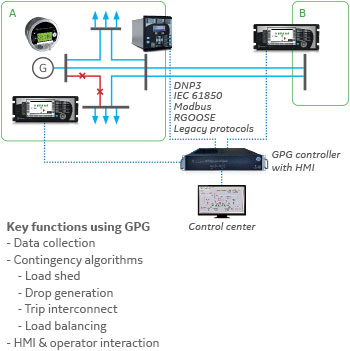
Intelligent monitoring devices put across the networks connected
centrally to GridNode controller to execute contingency actions
GE's contingency action solution detects a disturbance in one part of an interconnected network which could result in interconnection overloading or frequency and voltage stability conditions. GE’s solution will take action to remediate these situations by stabilizing the load and generation on the networks thereby protecting the interconnect.
Contingency Action Solutions
Key Characteristics
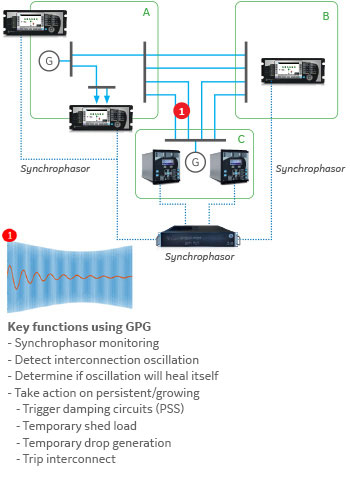
PMU's detecting oscillations are installed across the networks connected
centrally to GridNode Controller to trigger dampening actions
System oscillations* across an interconnect are caused by a major change (fault) in the connected networks and the associated sources are attempting to compensate to balance the load and generation. If oscillations persist local protections within a network will react to protect the asset and trip the generators offline.
Using synchrophasor, GE's system oscillation remediation solution detects network oscillations and determines if these will heal itself. When it is determined these oscillations will not heal itself, GE's solution will attempt to dampen the oscillations and if needed trip the interconnect.
Detection and dampening of system oscillations
Key Characteristics
*Both system (natural) and forced oscillations
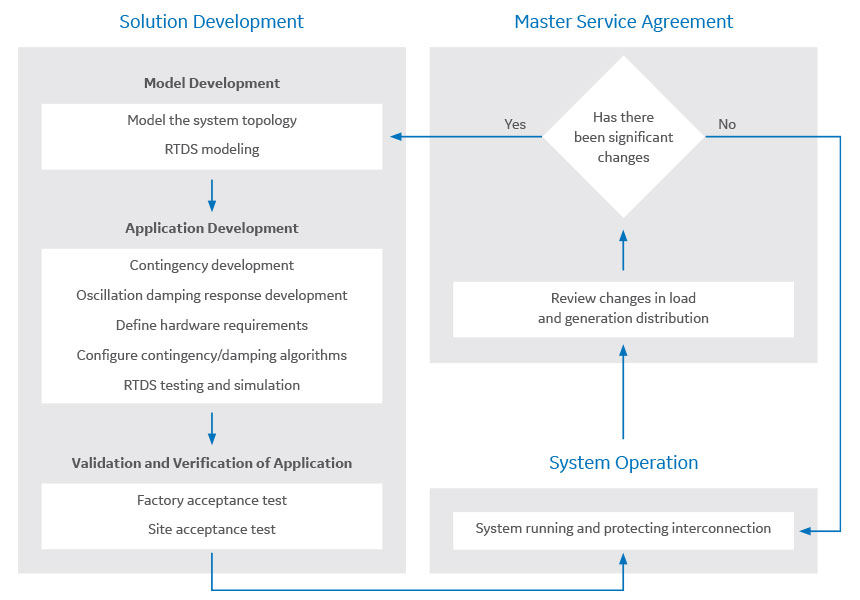
Measurement Equipment
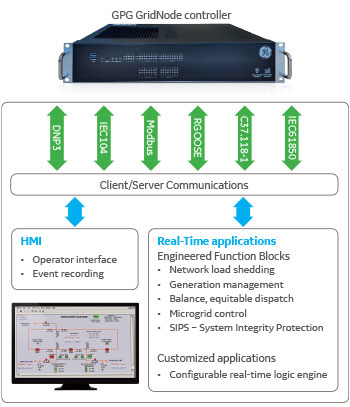
Contingency action solution
Detection and dampening of system oscillations

Communications Equipment
Within a substation
Wide Area communications

Example of interconnection between the grids using Oscillation Detection
GE's oscillation detection solution monitors the active power flow between Turkey and Bulgaria/Greece.
Upon detection of the oscillation, GE solution will shed up to 1400MW of load across 15 substations located in Istanbul region to dampen the oscillations.
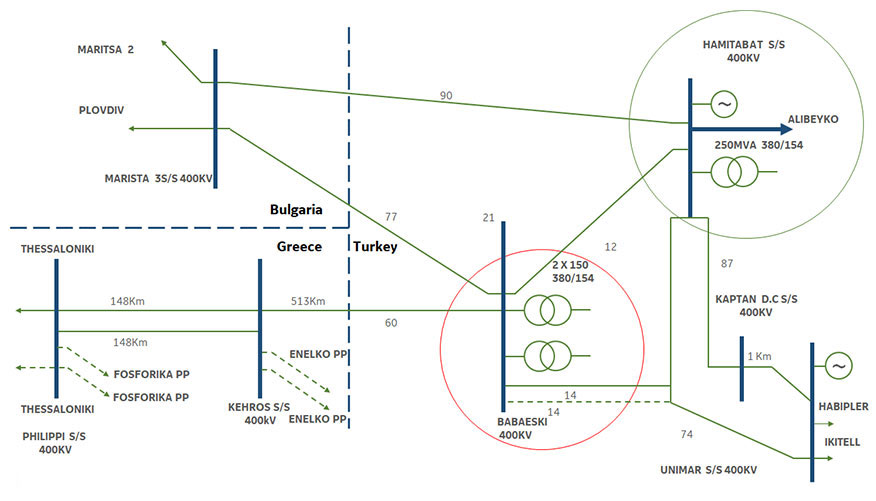
*European Network of Transmission System Operators for Electricity